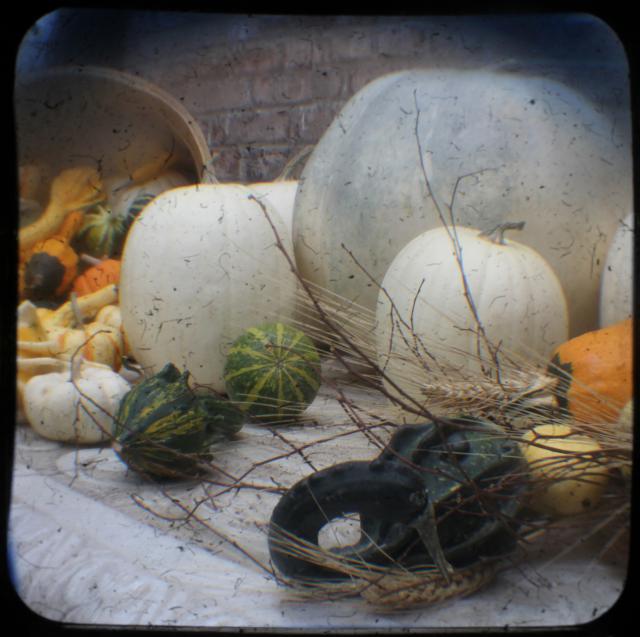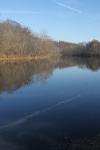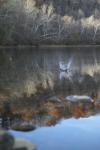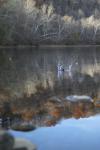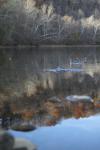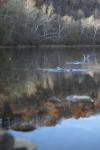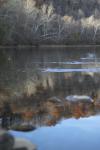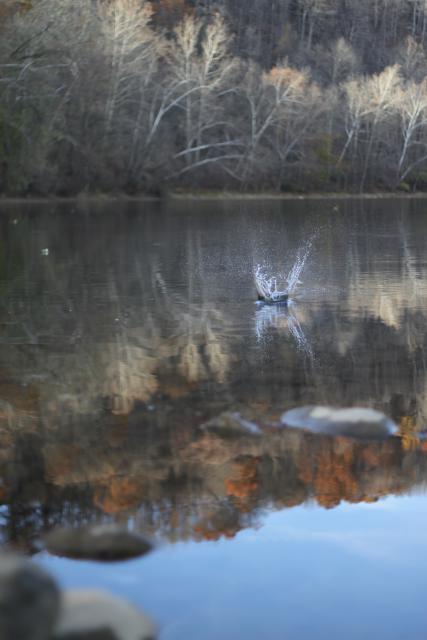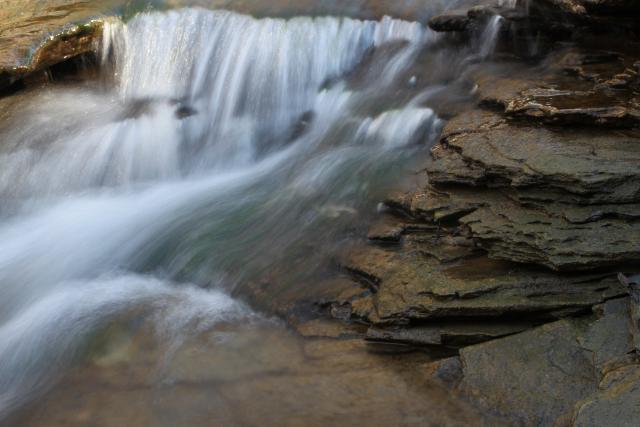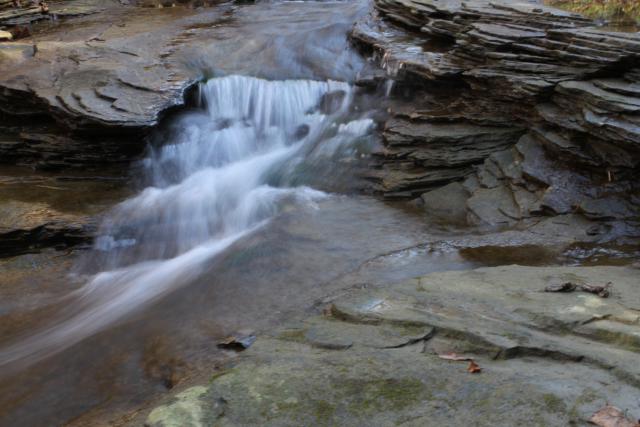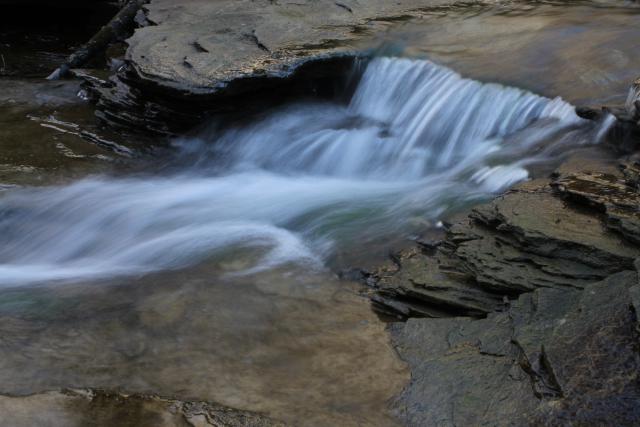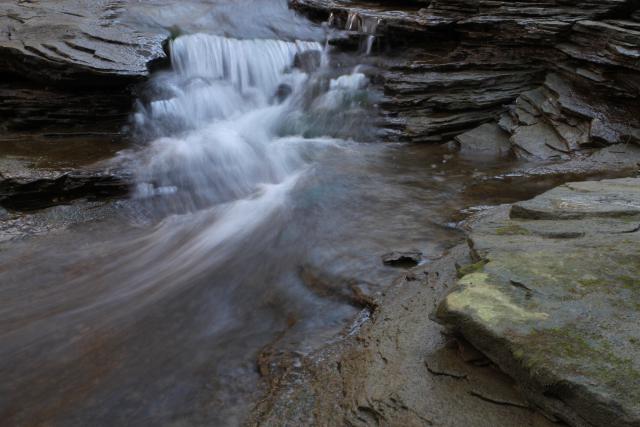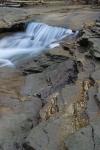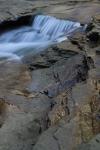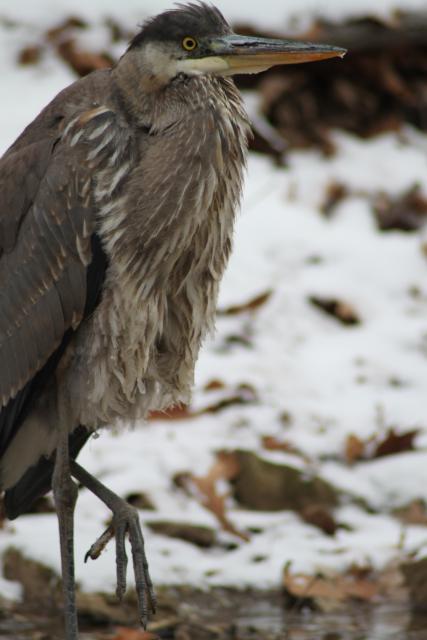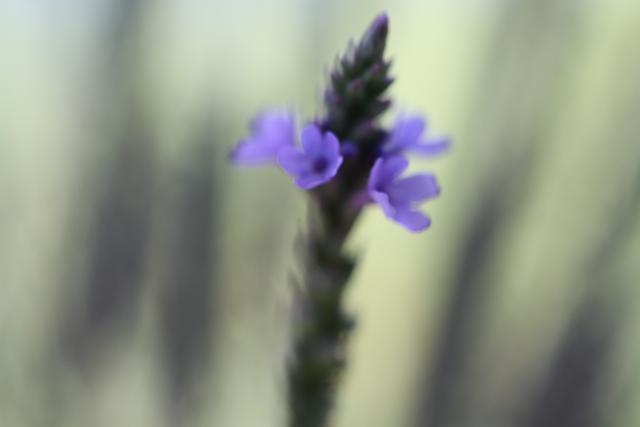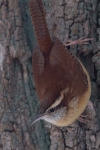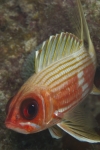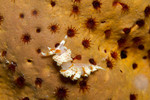TTV Happy Thanksgiving (part 1)
ktuli — Tue, 11/23/2010 - 19:48
I know this is a little early, but I figured I would do a couple days with of this. Enjoy, and have a great Thanksgiving (though you should stop back tomorrow for the second half of the Thanksgiving TTV treats).
Technical Data: Canon EOS 7D TTV Argus Seventy-Five, Tokina AT-X M35 Pro DX AF 35mm f/2.8 Macro 1:1, 1/6 sec at f/16. ISO 200. Monopod and handheld. Cropped in Photoshop Elements 8.0. Phipps Conservatory.
- Bill
Poll: Top Third or Bottom Third
ktuli — Sun, 11/21/2010 - 19:32
I usually don't do polls so close together, but I wanted to share these and gather opinions on whether folks liked more water or more sky.
I know I've mentioned it repeatedly in my critiques of shots, but I don't know if I've specified what exactly is mean when I refer to 'the thirds'. Imagine drawing a tic-tac-toe grid on your photo (or in your viewfinder when composing your shot). One thing to look at is whether any lines work well along one of those grid lines - an easy one is your horizon in landscape photography like this. Another way to look at those grid lines is where they intersect - placing one of your main focal elements at that point is generally considered. This is usually referred to as the Rule of Thirds even though it is more of a suggestion than a rule.
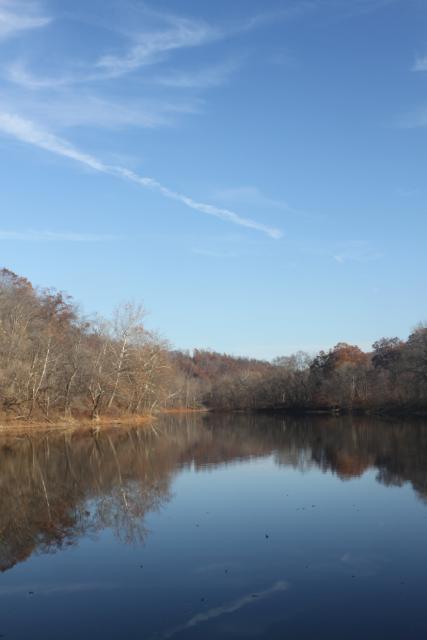 |
||
Both Photos Technical Data: Canon EOS 7D, Tokina AT-X M35 Pro DX AF 35mm f/2.8 Macro 1:1, 1/12 sec at f/22.6. ISO 200. Circular polarizing filter. No post production. Cedar Creek Park, Westmoreland County, PA.
I know these shots are not 100% identical left-to-right as I think I had to sidestep some low hanging tree branches to get the bottom third image, but I think it serves to show the difference between the placement of the horizon (or in this case the water level) on the top or bottom third.
You know the drill - place your vote, then leave me a comment to let me know what made you vote the way you did.
- Bill
Skipping Stones Sequence
ktuli — Fri, 11/19/2010 - 07:51
I don't feel much like typing much again today, so you get to benefit by getting to look at photos without a bunch of blabbering on and on.
Just mouse of the thumbnails to see the larger image.
Technical Data: Canon EOS 7D, Canon EF 50mm f/1.8 II, 1/1580 sec at f/1.8, ISO 200. Dolica AX620B100 tripod. Satechi TR-A Timer Remote Control Shutter Release. No post production. Cedar Creek Park, Westmoreland County, PA.
Enjoy.
- Bill
Cedar Creek Waterfall (part 2)
ktuli — Thu, 11/18/2010 - 21:52
I guess to call this a waterfall is a bit of a stretch, but I'm not sure what else to call it. Regardless, here are several more angles of it.
All Photos Technical Data: Canon EOS 7D, Tokina AT-X M35 Pro DX AF 35mm f/2.8 Macro 1:1, 1/3 sec at f/22.6. ISO 200. Dolica AX620B100 tripod. No post production. Cedar Creek Park, Westmoreland County, PA.
I know the middle one is pretty similar to yesterday's, but they are different angles. I like how each shot is different and has its own feel. Pick your favorite and drop me a comment with your critique.
- Bill
Cedar Creek Waterfall (part 1)
ktuli — Wed, 11/17/2010 - 19:11
Technical Data: Canon EOS 7D, Tokina AT-X M35 Pro DX AF 35mm f/2.8 Macro 1:1, 1/3 sec at f/22.6. ISO 200. Dolica AX620B100 tripod. No post production. Cedar Creek Park, Westmoreland County, PA.
Why This Photo: I was trying multiple angles of this small waterfall, this may be my favorite (maybe... I keep changing my mind).
What Works: The relatively long shutter speed worked to produce the soft, blurred stream of water, and the composition produces a very nice balance of the elements in the photo. The large flat rocks in the foreground provide a nice starting point for the viewer's eyes, leading into the striated layers of the rocks further back which curve the direction of the photo to the waterfall which rests nicely on one of the thirds. The water itself being the main focus of the shot produces a final line back out of the shot with the interesting curve of the water's path.
What Doesn't Work: Honestly, the image seems fairly monochrome (perhaps it would be better as a full black and white job). A splash of color might have brought some more "life" to this photo.
Like I said, I have several other angles of this small waterfall to share, so perhaps I'll get to them soon. For now, leave a comment and let me know what you think of this shot.
- Bill
Skipping Stones
ktuli — Mon, 11/15/2010 - 20:30
I know I've tried today's photo once before, but apparently I did not get very good results because I can't find any photos from the previous attempt, and to be honest, this most recent attempt yielded similarly poor results. So before we even get started, you can know that this is something I'll try again someday.
I am talking about capturing a photo of a flat sheet of water, with a nice reflection, and one or more splash of a skipping stone. I honestly can't remember why the last set did not work out, but when I tried the other day, I figured I would give the 7D's 8 fps shooting speed a run for its money. One nice thing came of this, I was able to confirm that my camera actually can do the 8 frames per second that it claims.
While the last set's problem was probably because I didn't really know what I was doing, this set's problem was more than I wasn't thinking enough and taking my time to fix all of my problems before I left. The biggest problem I faced this time was focus. I had manually picked a point to focus on, not trusting that the camera's AF system could keep up (though I didn't even try it to find out). So unless the splash was in the right place, it is out of focus. The other main problem I had was that I didn't compose my shot very well first. As you can see, the background is not the greatest (I should probably try this when things are bright and green or in full autumn colors). But I did get a couple keepers (and a handful more that might not be that great, but I kept any way).
Technical Data: Canon EOS 7D, Canon EF 50mm f/1.8 II, 1/1580 sec at f/1.8, ISO 200. Dolica AX620B100 tripod. Satechi TR-A Timer Remote Control Shutter Release operated by lovely assistant Christina. No post production. Cedar Creek Park, Westmoreland County, PA.
Why This Photo: As I said above, but in case you weren't listening, I just really like the idea of capturing a shot of a nice reflection and the splash of a skipping stone.
What Works: The splash on this shot is nice - crisp focus, perfectly frozen motion, and an intriguing shape. If you look close enough, you can even see the stone flying away from the splash.
What Doesn't Work: Just about everything else. The depth of field is a bit too shallow - perhaps I really didn't need the aperture of f/1.8. Possibly a tighter crop would make for a nicer shot. The background is rather bland with the bare November trees not providing a dark enough surface to make the splash really stand out. And while it is really hard to put the skipped rock in an specific location, this splash being dead center of the frame is unfortunately drab.
All in all, not the greatest shot. But I learned some things from this attempt, which should make the third attempt even more successful (hopefully). Things I will probably try next time:
- Smaller aperture (maybe f/2.8 or even f/3.5) for more depth of field
- Higher ISO to compensate for the smaller aperture (but not too high, don't want noise)
- Longer focal length (for a closer shot of the splash, though this will certainly reduce the success rate)
- Try Auto-Focus (it may or may not work, but at least check)
- A better background/composition (maybe during summer or early fall)
Even though I only came away with a couple keepers, as long as I learned something to hopefully make the next attempt better, this was worth the effort. Plus I do like the therapeutic nature of skipping stones.
- Bill
PS: Thanks are in order to Christina (who I met in my Photography 101 class) for manning the shutter release while I tried to skip the stones in the right spot to capture images like the one above. So one might say that technically she captured this shot.
Poll: Redo or Undo
ktuli — Sat, 11/13/2010 - 22:01
So today's trip to Cedar Creek Park was pretty successful. I'll have several good photos to share from the trip, but today I want to talk a little about deleting photos from the camera.
I usually am fairly good about being careful when deleting photos through the camera, but every once in a while I have a bunch I'm deleting and I zone out and delete one too many, or (as in the case with my SeaLife DC1200) sometimes confusing menus cause an unwanted delete of more than I expected. It has happened before, and I'm sure it will happen again, and you might not think it, but it'll probably happen to you someday too.
Today, I accidentally deleted a photo I wanted and decided I would simply try to replicate it. But also when I got home, I used Pandora Recovery to undelete the file from my compact flash card. I've used Pandora Recovery a couple times before, and really like it as a piece of software.
First, it is free. If want to download and use it for free, you definitely can. I personally am not a fan of doing that for software I like and have sent a small donation to the team to show my appreciation. So while it technically is free, I'd recommend tossing a few bucks their way to support such a good product. The software is small and light, and doesn't try to install any other software you don't want. It isn't adware or nagware. It is just exactly what it says it is. A powerful and easy-to-use tool to recover deleted files.
Pandora Recovery is definitely something that should be in every photographer's toolbox for those cases when you really need to get that one shot back. Do yourself a favor and download it today and then send the team a quick PayPal donation - you won't regret it.
So let's look at the photos...
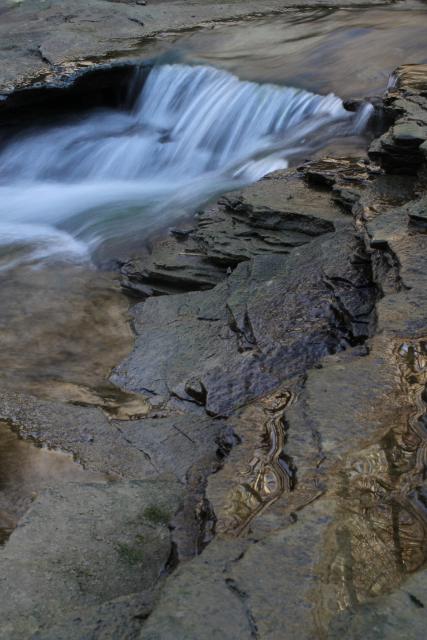 |
||
If you mouse over the thumbnail on the left, the larger image will display that photo. So you can easily compare the two back and forth.
Interestingly enough, despite twenty minutes passing between the two shots, I managed almost identical shots. The technical data was 100% identical, the only thing that differs is the lighting and the framing of the shot from setting the tripod down and angling the ballhead differently.
Technical Data: Canon EOS 7D, Tokina AT-X M35 Pro DX AF 35mm f/2.8 Macro 1:1, 1/3 sec at f/22.6. ISO 200. Dolica AX620B100 tripod. No post production. Cedar Creek Park, Westmoreland County, PA.
I'm going go back to my typical stance here and not share my preferred photo just yet. Place your vote and leave me a comment to let me know which photo you chose and why. Give a full critique if you like.
Oh, and don't forget to check out Pandora Recovery before you need it in a hurry.
- Bill
Racket-Tailed Roller
ktuli — Fri, 11/12/2010 - 19:00
I can't tell you much about this photo. It was taken with our old Canon Rebel film camera. I have no clue what settings were used, and can only guess that it was taken through our Canon 80-200mm lens. But after that great bird photo yesterday, I figured I'd continue with another.
This is a racket-tailed roller (Coracias spatulatus). The shot was taken at the Columbus Zoo in Ohio over four years ago.
I like the grainy look that the film gives this shot, and the beautiful bokeh in the the background is a nice offset to the bright colors of the bird. There's even a nice catch-light in that tiny little eye.
What do you think?
- Bill
Great Blue Heron
ktuli — Thu, 11/11/2010 - 20:18
I'm working on details for a photo trip out to Cedar Creek Park this weekend with some friends, which had me looking through some other photos from previous trips to this park.
I have another shot of this great blue heron (Ardea herodias), but this wider crop works nicely too.
Technical Data: Canon EOS 7D, Tamron 70-300mm f/4-5.6 Di LD Macro1:2 at 300mm, 1/390 sec at f/5.7. ISO 320. No post production. Cedar Creek Park, Westmoreland County, PA.
Why This Photo: I stumbled on this guy while wandering through the park on a very cold December 30th last year. I instantly switched to my Tamron 70-300 telephoto (my longest lens at the time) and worked on slowly and quietly moving into good position - take photos all along the way.
What Works: For a handheld shot at 300mm, the focus is pretty sharp - especially on the face of the bird. The positioning of the bird's foot gives a bit of a sense of motion as the bird was wading along the stream.
What Doesn't Work: Despite being nicely blurred, the background is still fairly confusing with brown (dirt and leaves) and white (snow) and can be somewhat distracting. Also the crop cutting out the other foot is somewhat unsettling (the same can be argued for the rest of the bird's body, but doesn't seem as bad).
It is kind of unfortunate that I managed this shot in December when the heron did not have its namesake nice blue color, but I wasn't about the pass up the opportunity because of something like that. We saw plenty of blue herons (and even a couple very beautiful green herons) this summer while kayaking, but I didn't have the SLR with me and the SeaLife DC1200 really isn't that functional for shots like this.
Let's hope I can come home with some more new good shots from one of my favorite parks (and hopefully the friends that go with me do too!).
- Bill
Soft Swamp Verbena
ktuli — Wed, 11/10/2010 - 19:28
At first glance this shot might appear to be one to throw away, but after looking at it a few times, I find myself really liking the soft nuances of this photo of the fairly common Swamp Verbena (Verbena hastata).
Technical Data: Canon EOS 7D, Tokina AT-X M35 Pro DX AF 35mm f/2.8 Macro 1:1, 1/330 sec at f/3.5. ISO 200. No post production. Moraine State Park, Portersville, PA.
What Works: The soft focus (probably not intentional, but helped along by the macro lens, the small subject, and probably wind) helps to produce a pleasing affect here, causing the viewer to scan the photo repeatedly searching for recognizable features. The wide aperture helps to make the other stems just dark shadows in the background. The overall exposure and colors continue the soft, almost dream-like quality of this shot.
What Doesn't Work: The center placement of the main flower stem might have been better suited to one side. Also, if the background stems could have shown some of the purple color to illustrate that they have flowers as well might have helped to make a nice pattern in the soft focus.
Obviously, an intentionally out of focus photo is not the easiest thing to pull off successfully, and honestly this one is probably a fluke. But it definitely warrants looking at a photo a few times before throwing it away if you can catch a lucky break like this on what might have been considered a mistake.
- Bill

